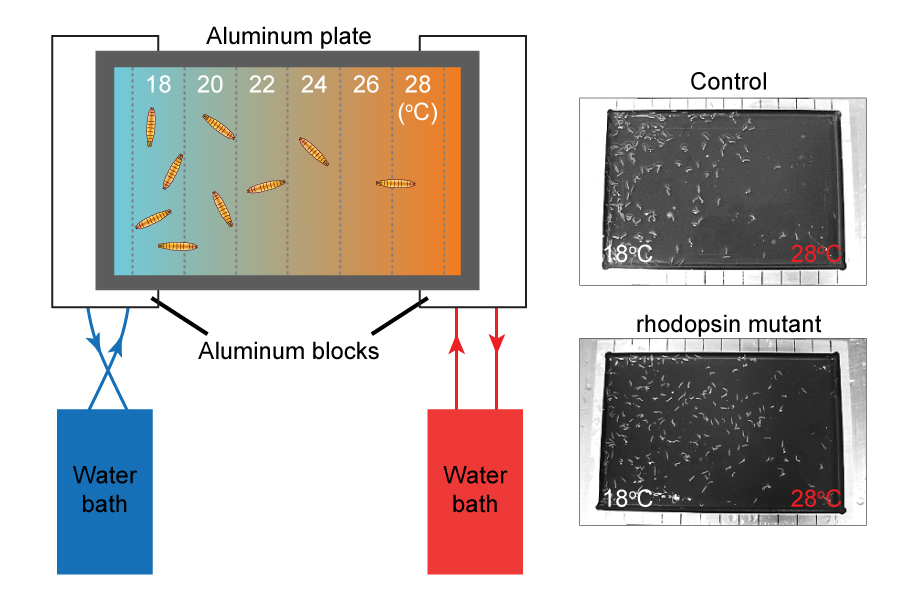Development of temperature gradient assay system to determine thermal preferences of fruit fly larvae
All organisms live under fluctuated ambient temperatures and have sensory mechanisms to find out optimal temperatures. Fruit flies (Drosophila melanogaster) primarily prefer 24oC but switch their preference to 18oC during specific larval stages. We previously reported that the preference switch requires rhodopsins, which has been known as light sensor, and ion channels named TRPA1 (Sokabe et al., Cell Rep. 17(2): p336-44, 2016).
In this paper we explain in detail how to assemble the temperature gradient assay system used in the report and the preparation of fruit fly larvae. A linear temperature gradient is formed on the surface of aluminum plates by placing on two aluminum blocks that connected to two water baths. This system allows to establish various temperature conditions in physiological ranges to evaluate thermal preference of small animals such as fruit flies and nematodes. We demonstrated that the fruit fly larvae carrying a mutation in a gene involved in thermotaxis distributed differently from a control animal on this apparatus. The continuous temperature gradient helps evaluating a distribution of animals in short time, which is advantageous to classical two-way choice assay system.
This method may be applicable to studies that requires high-throughput quantitative analysis in thermal preference.

Temperature gradient system and examples of thermotaxis of fruit fly larvae
Copyright: Takaaki Sokabe
Collaborative Researcher
Name: Jiangqu Liu, Craig Montell
Department: Dept. of Molecular, Cellular and Developmental Biology
Institute: University of California, Santa Barbara
Funding
Grant-in-Aid for Scientific Research on Innovative Areas (Thermal Biology)

